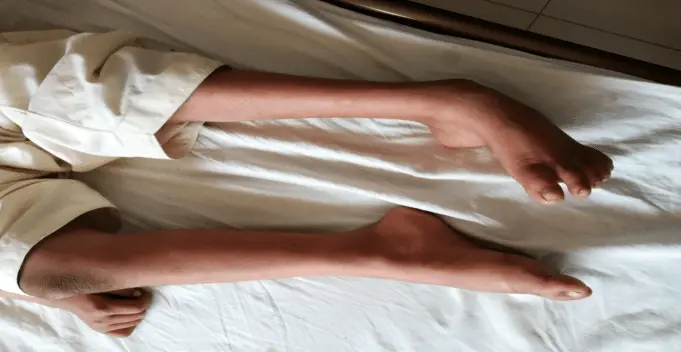Charcot-Marie-Tooth disease or CMT, is classified as an inherited peripheral nerve disorder. The human peripheral nerves are found in the extremities of the human body but are connected via neurons to the nerves of the CNS which can be found on the surface of the brain and the spinal cord.
CMT was coined in 1886, and the physicians who discovered include Jean-Martin Charcot, Pierre Marie, and Henry Tooth. The disease is often referred to as an hereditary motor and sensory neuropathy, or personal muscular atrophy.
According to the National Institute of Neurological Disorders and Stroke, Charcot Marie Tooth disease is one of the most prevalent inherited neurological disorders that affects 1 in every 2,500 individuals in the United States alone.
Symptoms
The symptoms associated with CMT generally manifest in adolescence, but can also appear during mid-adulthood. The disease targets the nerves that is controls of voluntary muscle functions.
Generally symptoms may include:
- Weakness of the leg muscles
- Difficulty standing
- Frequent stumbling or tripping
- Difficulty walking
- High stepping when taking strides
Physical signs of CMT may include:
- Foot deformity (such as high arches or hammertoes)
- Inverted lower legs
As the condition progresses, an affected person may experience difficulty moving their tongue, hands, fingers, wrists, and feet.
Causes
Charcot-Marie-Tooth disease is a congenital disease. It means the disease is present at birth and it is caused by one or more impaired genes. These defective genes can be passed down from one or both parents.
The defects caused by the disease can disrupt the structure and function of a person’s peripheral nerve sheaths and axon which are responsible for insulating the nerves in the body.
Occasionally, it happens that some individuals are born with the condition without it being caused by an inherited defective gene.
There are five major types of CMT, with each having its cause and they include:
- CMT1 is generally triggers by a duplication of a gene on chromosome 17. The gene is responsible for producing the protective myelin sheath around the nerves
- CMT2 occurs when there is a defect in a patient’s peripheral nerve cells’ axon. The defect can be caused by a defect in their mitofusin 2 gene.
- CMT3, also referred to as Dejerine-Sottas disease, is responsible for the mutation in a patient’s P0 or PMP-22 gene. Although this type of CMT only occurs occasionally.
- CMT4 occurs when their are several gene mutations. These may include genes like SH3TC2, MTMR2, EGR2, GDAP1, NDG1, FIG4, MTMR13, FDG4, and PRX.
- CMTX occurs when there is a point mutation in the connexin-32 protein on a patient’s X chromosome.
Of all recorded cases, CMT1 is still the most common type of CMT. All kinds of CMT disrupt the signals coming from nerves in the extremities to the brain.
Diagnosing CMT
Diagnosing CMT requires the attention of a medical doctor. They typically would order to get tests done in order to determine the cause of the condition and how badly damaged the nerves are. These tests may comprise of nerve biopsy, electromyography, genetic testing, and nerve conduction supply,.
Genetic testing is utilized to detect anomalies in the genes that may be responsible for CMT. A sample of the patient’s blood may be needed for this test.
Specialists can conduct EMG by inserting very thin needle into the muscles. Typically, the needle is connected to a wife that is attached to a machine. Patients would be asked to flex and relax their muscles as the machine reads the electrical activities.
Nerve conduction test can be performed to detect electrical signals in the nerves. A neurologist can place electrodes on a patient’s skin, then transmit small amounts of electricity through the electrodes. Weak stimulation may indicate the presence of CMT.
A nerve biopsy is done by a surgeon. The procedure includes removing a sample of nerve from a patient’s calf for analysis. This sample sample is inspected for the presence of CMT.
Treatment
A common treatment for people with CMT is physical therapy. This would mean patients with the condition have to engage in lots of exercise and stretching. This process helps to prevent atrophy, maximize muscle strength and muscle loss.
Patients may have to make use of assistive devices to help reach, grab, and push objects in event of loss of functions in the extremities.
Patients with CMT who have issues with grabbing items can make use of thumb splints. Orthopedic devices like splints and braces can also be used to prevent injuries.
Individuals with serious foot deformity can be treated with the combination of surgical corrective procedures and orthotics (specialized shoes).
Long-Term Outlook
How serious the symptoms of CMT differs from one person to another. The condition can case loss of sensation and deformities in the affected parts. To prevent further complications and relieve symptoms, it is essential that you inspect your feet regularly for ulcers, infections, and wounds.
Patients can wear shoes that are properly fitted and helps with good ankle support. It would also help to invest in custom-made footwear if it is a case of deformity.
Patients should ensure their joints and muscles are well taken care of to avoid function loss and injury. It is important to incorporate regular exercise into your daily routine. People who are unsteady on their feet can also use a walker or a cane to improve their stability.












